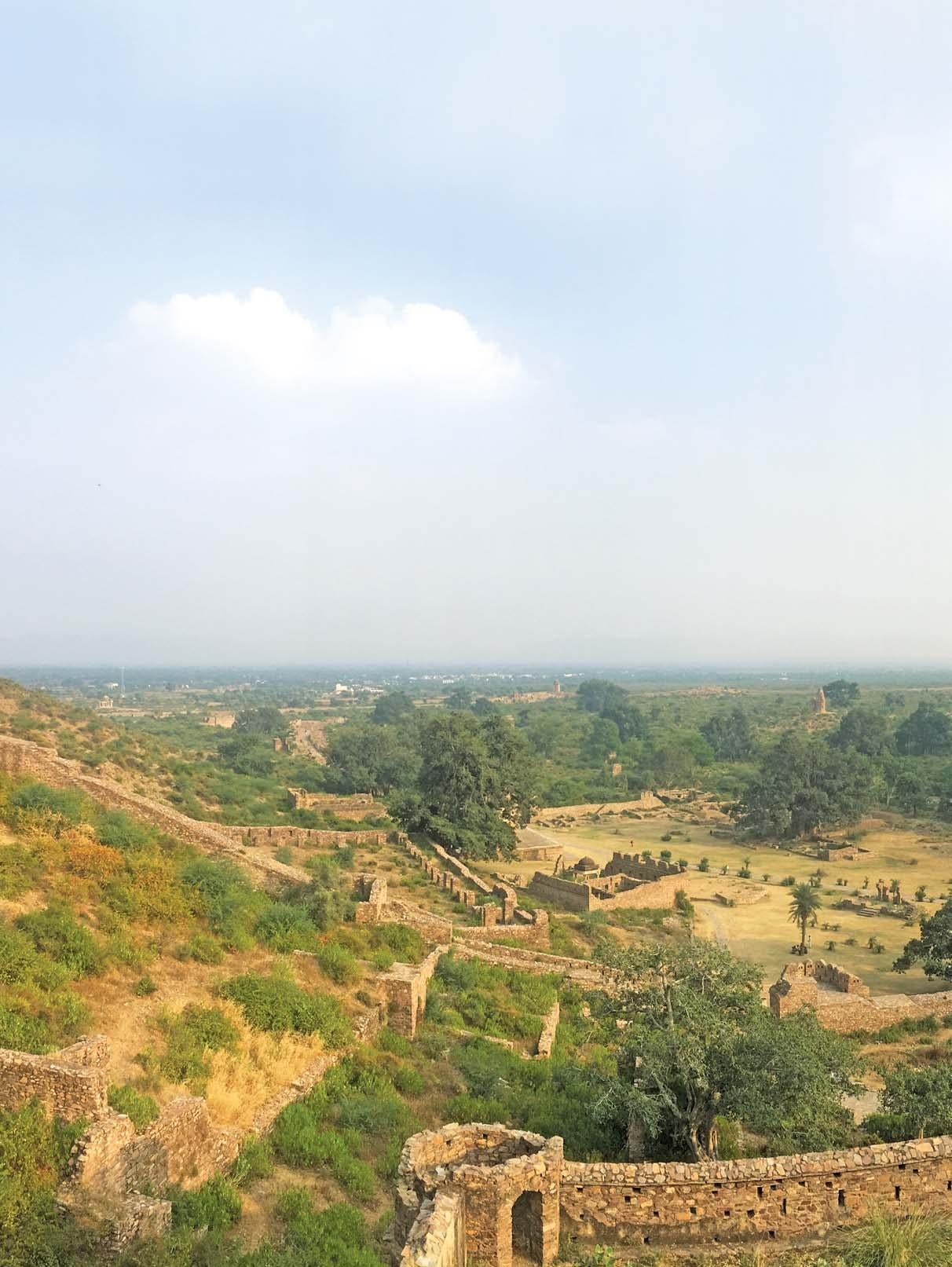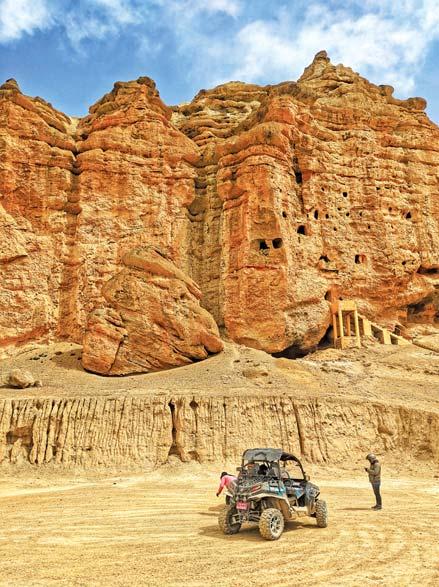
4 minute read
Lo Manthang
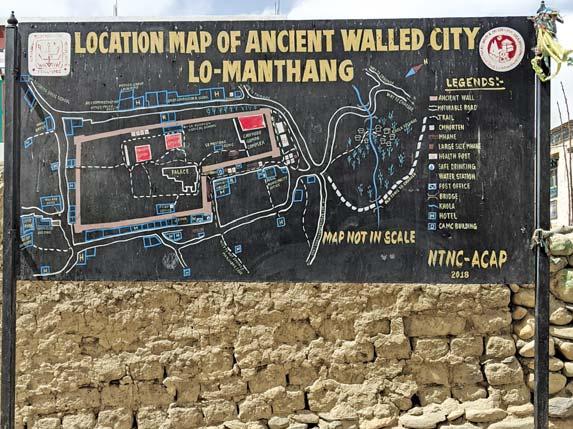
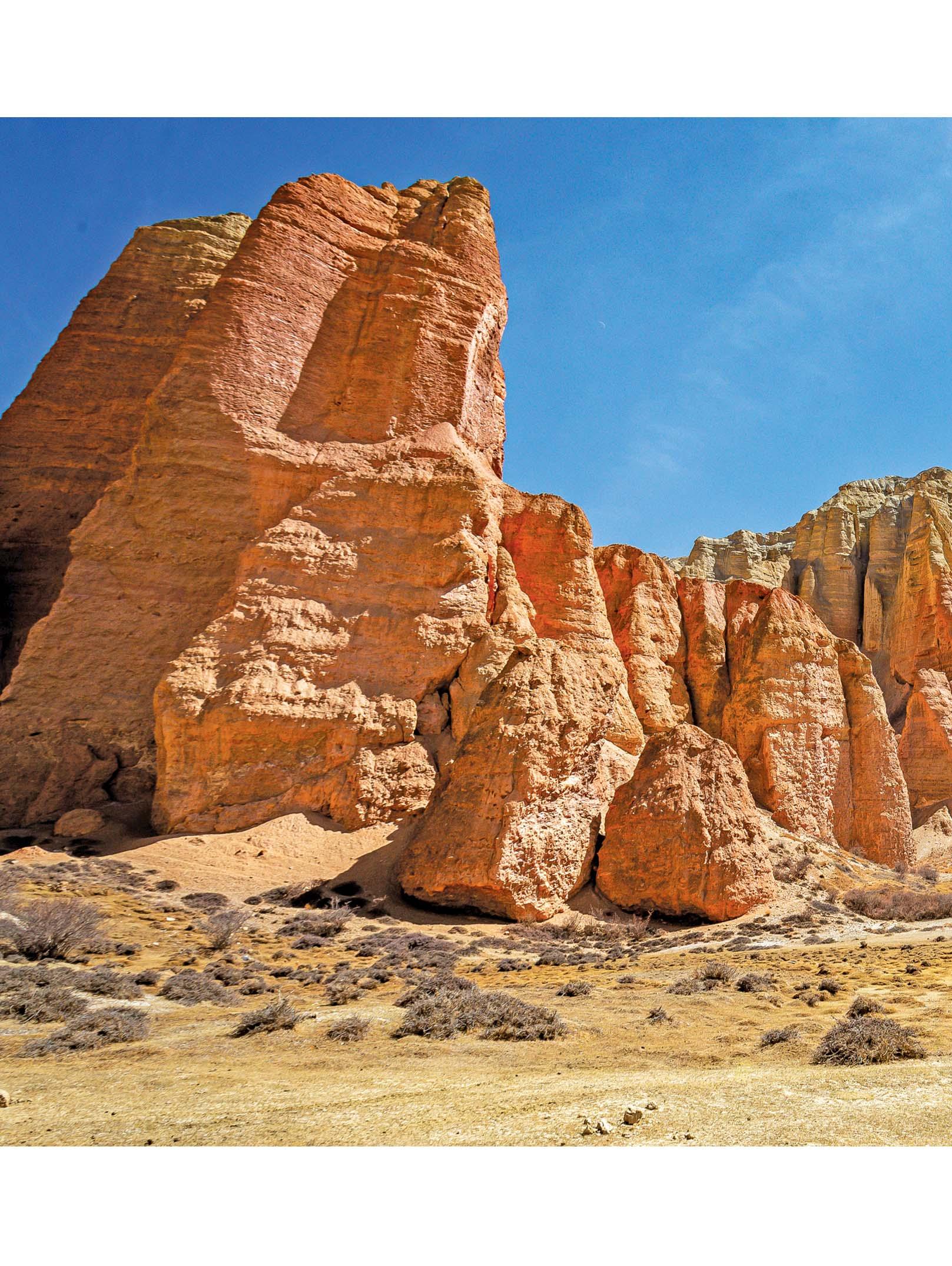
Advertisement
When travel opens up, be the intrepid traveller who can find her way to Lo Manthang in Nepal which does not feature on Google Maps.
AYANDRALI DUTTA.
says that its mystery is what makes it alluring.
GAURAVMAN SHERCHAN
captures a ringside view
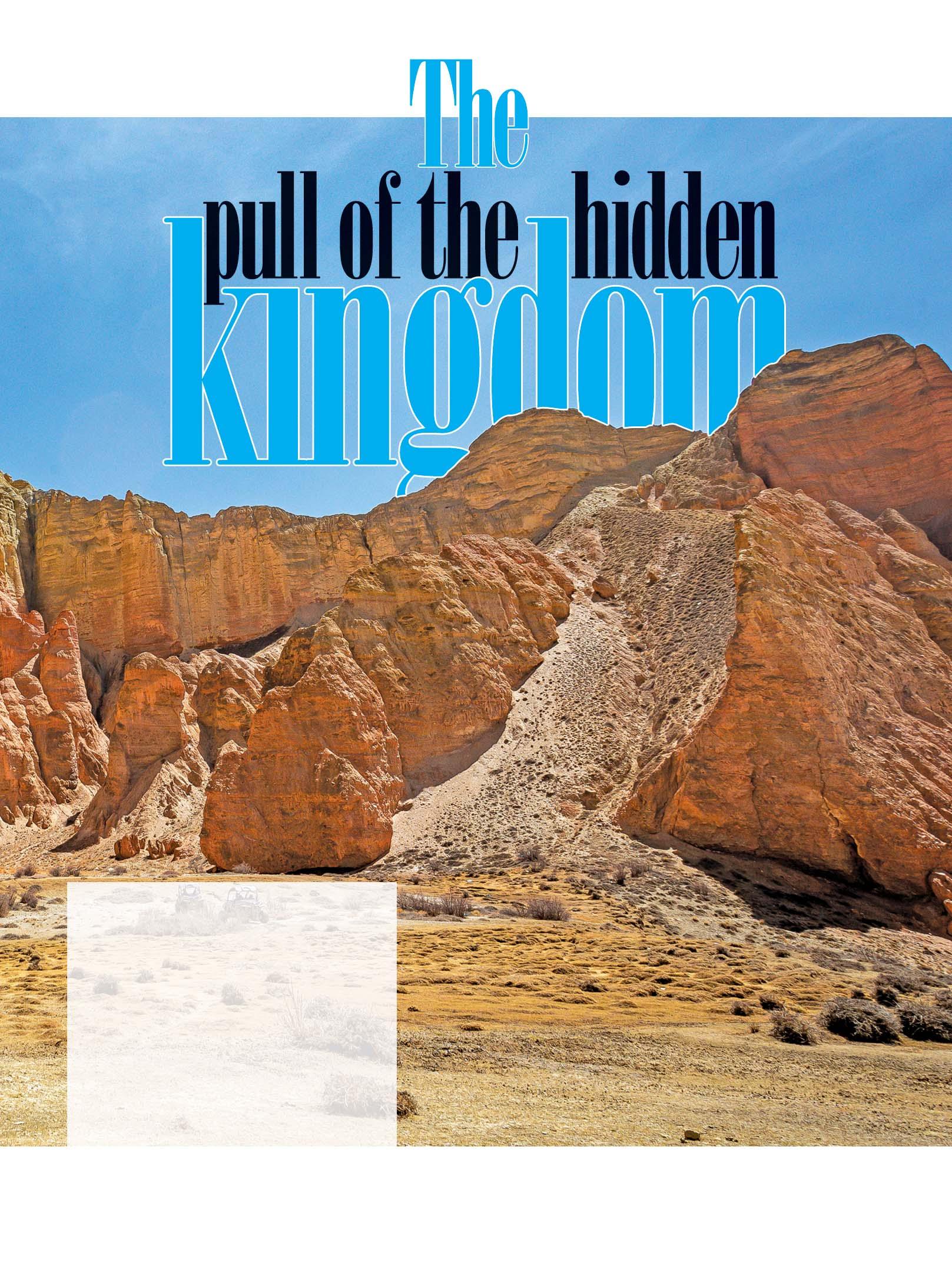
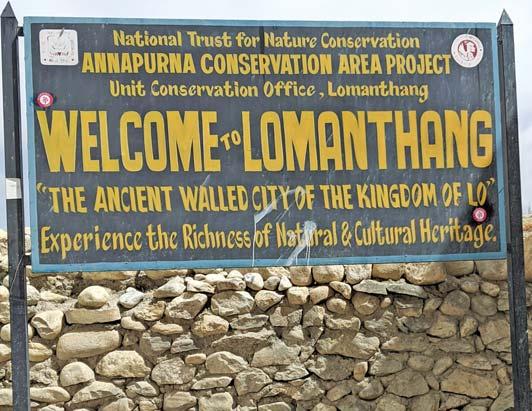

NEPALis not just about the incredible Himalayas but also a box of adventure which gives you an adrenaline rush. If you are one of those who prefer to take the less-trod path, there are several options.
The beautiful Upper Mustang is home to the walled town of Lo Manthang close to the TibetChina-Nepal border. Dotted with several Gompas, this quaint village dates back several centuries and is tucked in between high barren mountain deserts The stark brown landscape of the Mustang (which ironically translates as “fertile plain”) region is divided between Lower (Jomson-Muktinath-Kagbeni) and Upper
Clockwise from left: Chorten, an important Buddhist shrine; a colourful painting on a wall and a religious place to pray
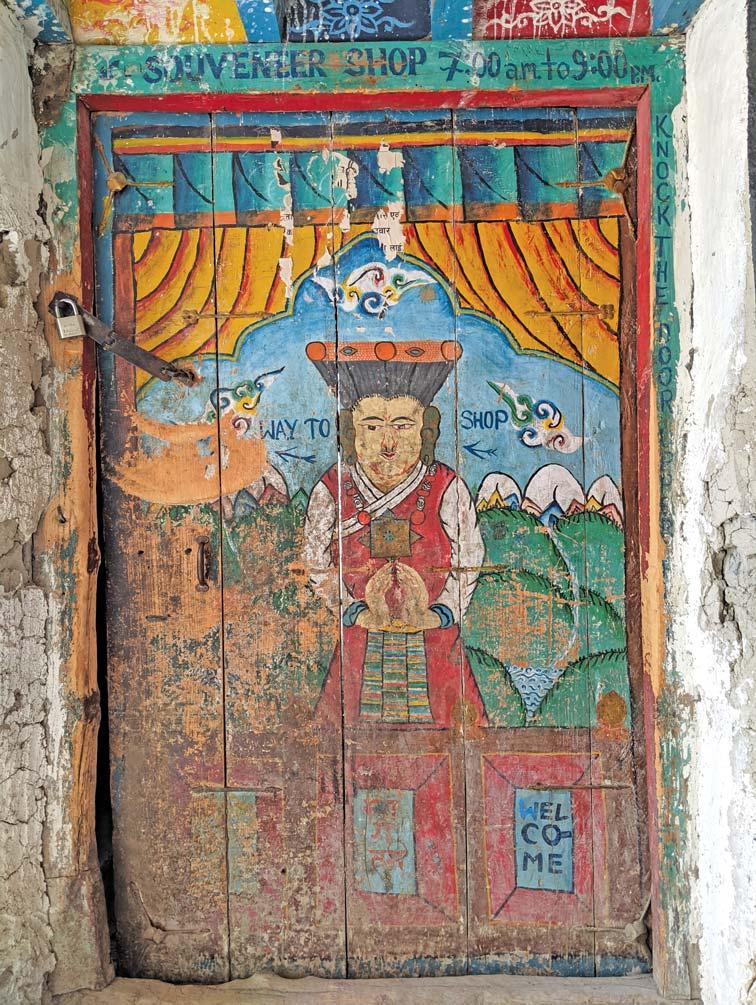
(Lo-Manthang and the border with China). The ancient Kingdom of Lo Manthang, founded by King Ame Pal in 1380, is also regarded as Nepal’s ‘Little Tibet’. It has remained isolated as not many have trod here. The path leading to it once served as a trade route for ancient traders but these terrains continue to be mystical and magical.


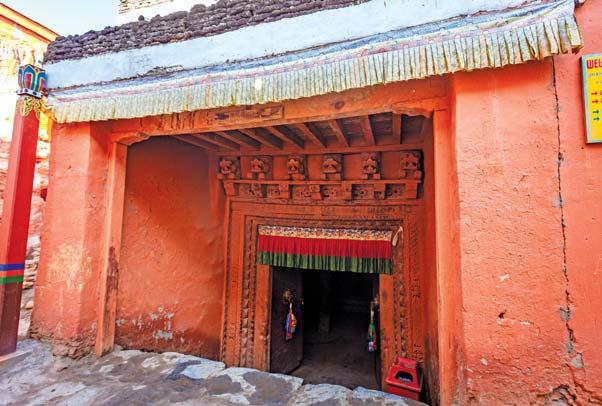
Clockwise from top left: Town centre; entrance of Thupchen Monastery and time seems to stand still here as the daily life progresses at a leisurely place
o Take a 1.5-hour flight to Kathmandu from Delhi and switch to a domestic flight to Pokhara which takes another 25 minutes. From there Jomson is a 20-minute flight. The Jomson airport is situated on the bank of Kali Gandaki River with Dhaulagiri, Annapurna and Nilgiri on either side making it one of the most tricky landings in the world. o From Jomson take an SUV to Lo Manthang. An entry permit is needed to enter Upper Mustang.Upper Mustang Restricted Area Permit for all foreigners costs $500 per person for the first 10 days and $50 per person per day there. A minimum of two people and a local guide are compulsory to visit here. o You also need to submit your passport details, trip itinerary and two passport-size photos. WHERE TO STAY: Royal Mustang Resort, Lotus Holiday Inn, Hotel Snow Land. BEST TIME TO VISIT: October and May
GETTING THERE
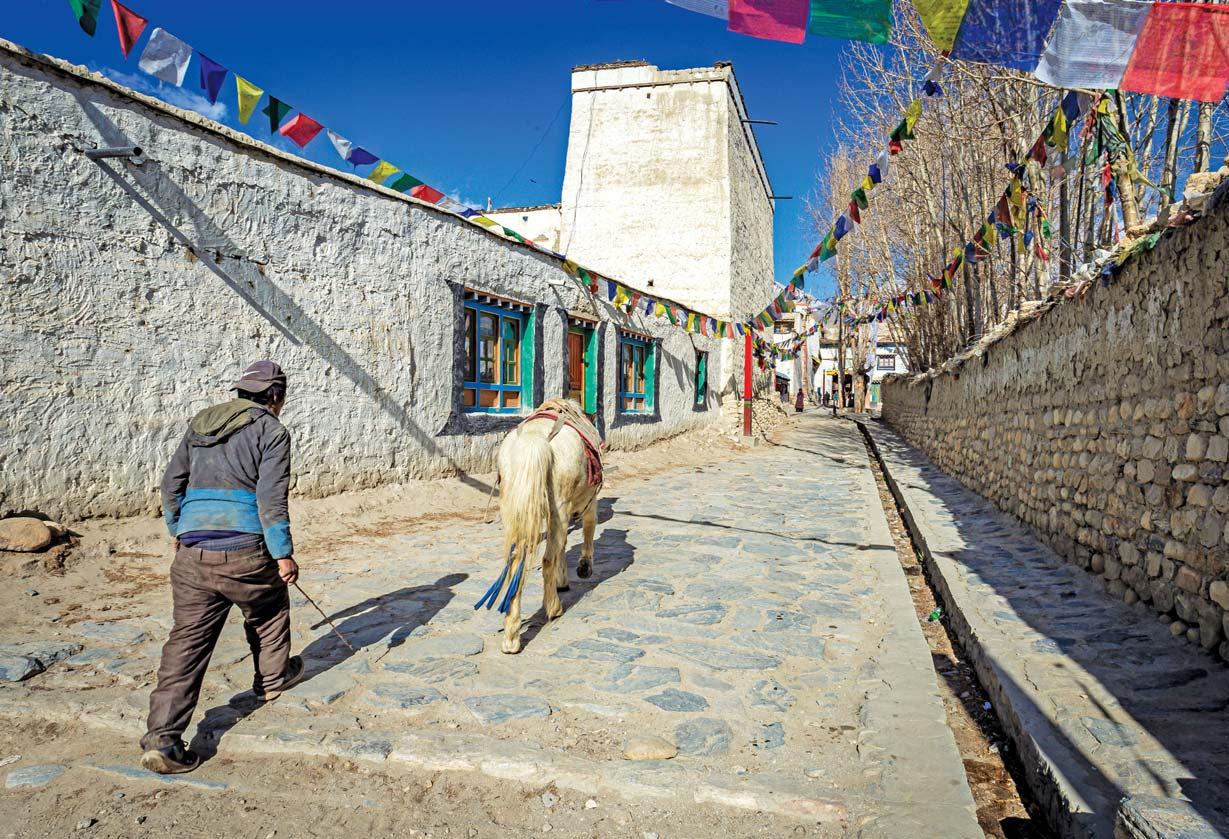
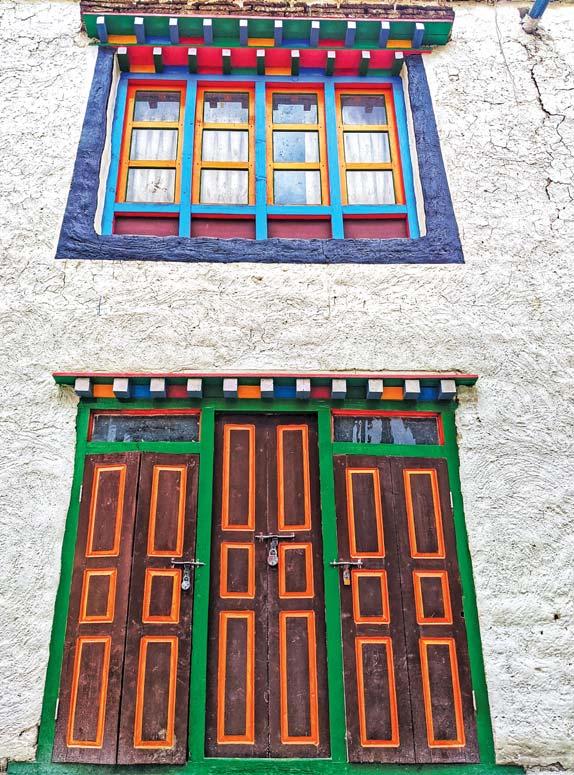
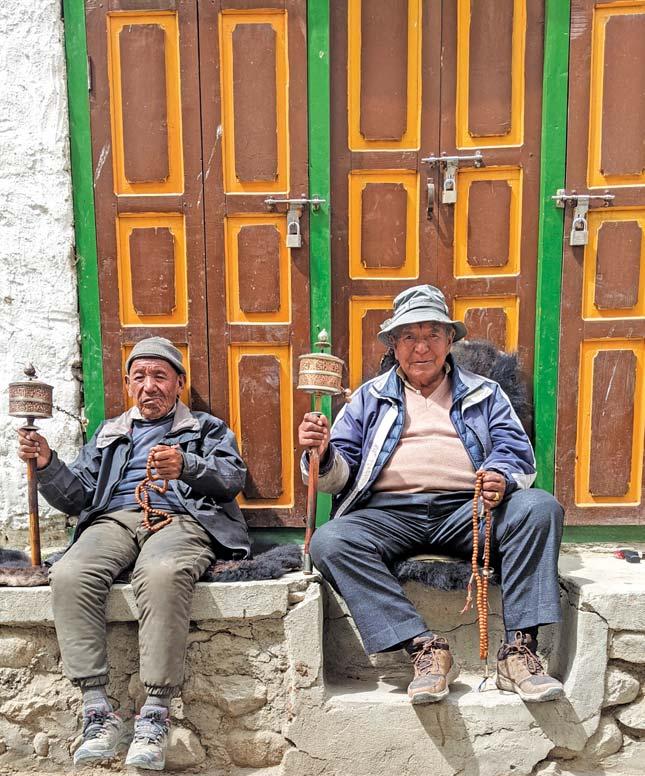
Bright and colourful doors and windows in the settlement and people swirling the prayer wheel
THE CHARM OF LO THISpicturesque, almost out of this world village is located on a high-altitude desert, north of Dhaulagiri and Annapurna. What has kept its charm intact is that the village, which is only accessible by 4x4 drive vehicles, is yet to make its way to Google Maps. The rustic charm is heightened by Buddhist monks, yaks, ancient forts and caves that are over 2,500 years old. The farmlands of barley and buckwheat, which are spread as far as the eye can see, give off a vibe of mystical spirituality.
Monarchy came to an end in 2008 in this rugged mountain village which is at a height of 3,800 metres. Inside this forbidden kingdom, one gets a glimpse of Tibetan Buddhist culture dating back centuries. This lensman’s delight is home to three main gompas — Dragkar-Thegchen Ling, Jampa and Thupchen Gompa, amongst which Jampa is the oldest. These ancient exquisite architectures are adorned with the finest Thangka paintings depicting Buddha’s life. Once painted in gold and other gemstones, these tell the priceless stories of a glorious past. Strolling around the walled city, the locals are usually seen to be busy swirling a prayer wheel while a few monks walk past. The entire picture makes you believe that time has come to a standstill here.
But the place holds more charms. A little outside the village are caves which date as far back as 8-10,000 BC and are carved into a steep cliff face 155 feet above the valley basin near the Kali Gandaki River in Upper Mustang. Don’t be surprised when you see proper rooms carved inside these for people to stay in.
The Jhong cave in Chhoser is five-storey high and has 40 different rooms with several ladders to go from one floor to another. While the Jhong caves give a stunning view of Chhoser valley, archaeologists are yet to find the actual purpose for which these were built.
Walking within the walled city of Lo-Manthang is nothing less than a spiritual experience and a journey where you can find yourself.


